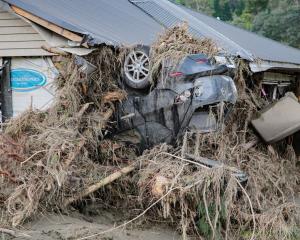
I watch more TV than is good for me, but every so often I learn things I would not otherwise know. Lately, the realisation has been growing on me just how much money Fonterra is spending to convince us all that it is a responsible power for good in our lives. Or maybe the aim is to tell its 10,500 shareholder farmers that their industry really does not deserve the bad press it gets for river despoliation, greenhouse gas emissions, river and aquifer depletion, marginal land conversions etc. We all want to be proud of what we do, so the effort is not surprising.
There are more than 30 YouTube clips of Fonterra ads that have been inserting themselves into our consciousness over the past year or so. They represent an industry that is staffed by mum and dad farming families that go back generations and where curly blond-haired kids are expected to take over the farm one day. They have the same pangs as the rest of us when their kids go off to school, but there is comfort that they drink one of the 170,000 milks distributed to schools every day. They care about the communities they live and work in.
These are hard-working people who get up at 4.30am for early milking. They use advanced technology that allows them to manage their animals and pasture with maximum efficiency, minimising use of water and energy. They care about the land they farm and have been planting trees, restoring wetlands, fencing off waterways.
The industry produces a high-quality product from grass-fed animals that is in demand all over the world and is the country’s top export earner. It is manufactured in factories that are managed for sustainability: lights only switch on when there is someone in the room.
All of this in eight regional variants and at times featuring the iconic Ritchie McCaw. Just how do you argue with that?
None of this is wrong; all of it happens. New Zealand’s dairy industry is indeed a low-cost world leader, commanding one-third of world trade in dairy products. It is indeed the country’s largest export earner. Dairy farmers surely do work punishing hours, and no farmer could last long without a care for the land. The majority of Fonterra’s farmer shareholders very likely are family ventures, some going back generations.
No question that best practice in the industry is to limit damaging runoff of nutrients into waterways with riparian planting and fencing.
But we know, and Fonterra knows, that there is a lot more to the story than this.
Dairy farming continues to make the largest contribution to methane and nitrogen emissions from agriculture, and these are in turn responsible for half of total greenhouse gas emissions of more than 18 tonnes, every year, for every man woman and child in the country. (Your car probably weighs about a tonne).
Fonterra’s factories burn gas and (the dirtiest of fuels) coal to produce milk powder, and the company is not planning to phase out coal until 2030.
The Government’s Our Fresh Water 2017 report finds nitrate-nitrogen concentrations in rivers are 10 times higher in pastoral than native areas (and twice as high again in urban areas), and with more rivers getting worse than better, the trend matches the increase in dairy intensification over the last decade.
Long established farming communities are weakened by the arrival of large-scale absentee-owned farms where share milkers or foreign workers stay for a time and then move on.
This is an industry that will have to face up to significant change over coming decades.
As reported previously in these columns, assessments of New Zealand’s ability to reduce its damaging emissions of greenhouse gases make it clear that our herds of ruminant animals will have to be decimated if we are to reduce emissions to near zero by 2050. The same is true for the world’s major economies. Trying to convince us, and itself, that all is well in an industry moving towards a sustainable future really is head-in-the-sand behaviour.
But this is not a problem for the dairy industry alone. It is one we all allowed to happen over the last 35 years since the economic reforms of the mid-’80s. And it is one we have all benefited from hugely as annual dairy exports have grown from less than $2 billion to $16 billion.
Back in 1984, there were about 2.5 million dairy cows in New Zealand; 30 years later in 2014 there were 6.7 million. The problem arose because the 1980s reforms allowed investment decisions to be guided by market prices that charged nothing for dumping GHG into the atmosphere. Thirty-five years ago, one might even argue that the dangers of GHG were not sufficiently known. That is no longer true, and there is now a price to be paid for carbon emissions; but farmers continue to be exempt.
If a limited set of price signals has got the dairy industry and the country to where we are now, the challenge for the next 35 years to 2050 is to develop an agriculture sector that is close to carbon neutral, but still delivers the export earnings we need to sustain a good standard of living for all New Zealanders. We all will benefit from that, so we should not ask the dairy industry to do it all by themselves. But perhaps we might ask that it stop wasting money on a PR campaign that pretends there is no problem to solve.
- Colin Campbell-Hunt is an emeritus professor at the CSAFE Centre for Sustainability, University of Otago. Each week in this column, one of a panel of writers addresses issues of sustainability.












